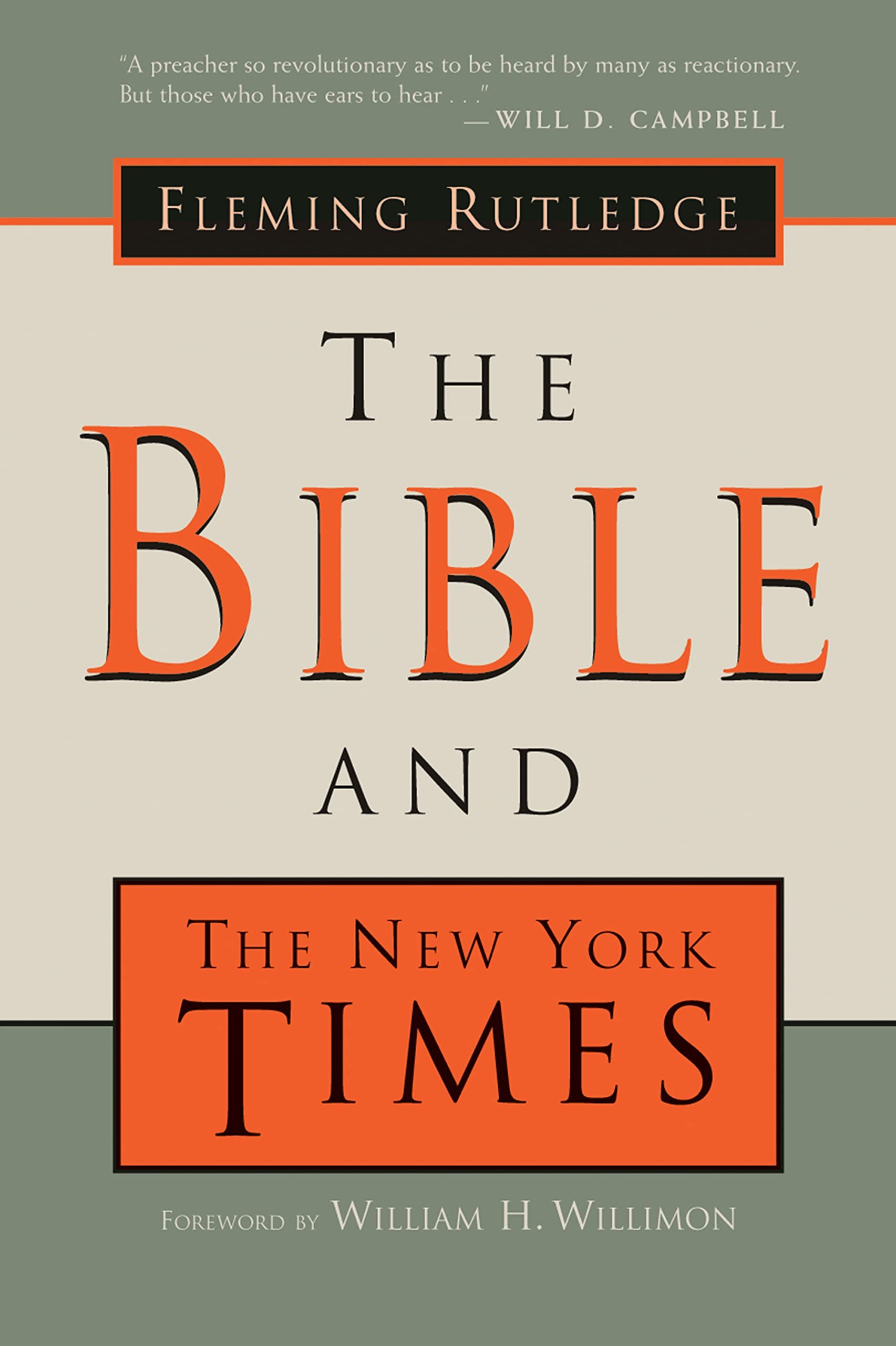The Bible and the New York Times
We’re in Advent, the liturgical season of preparation and anticipation for the Light who has come—and is coming—into the world. The best book for this season may well be Fleming Rutledge’s magisterial Advent: The Once and Future Coming of Jesus Christ (Eerdmans). Pro tip: if you start it now, you may finish reading it by Christmas Eve 2023.
Having read that one a few years ago, this Advent I opted for one of Rutledge’s earlier and possibly less well known books, called The Bible and the New York Times (Eerdmans). Although it’s not an “Advent” book per se, this collection of sermons is structured around the Christian calendar, making Advent (the liturgical new year) a good time to start it.
The title, of course, comes from Karl Barth’s famous line about how preacher-theologians ought to stand in the pulpit, figuratively if not literally, with the Bible in one hand and a newspaper in the other. “Take your Bible and take your newspaper, and read both,” he said. “But interpret newspapers from your Bible.”
If you’ve ever given a sermon—or listened to one—you know this is easier said than done. It is natural for us to read into the Bible our own biases on the debates of the day, or (depending on the church and the preacher) to avoid saying anything having to do with “the news” at all. For better or worse, the people in the pews are being catechized accordingly.
Fleming Rutledge, for her part, does this work of “interpreting the world to the church” (as the diaconal charge in the BCP puts it) about as faithfully as anyone I know. References to the news of the day are prevalent in these sermons. But Rutledge doesn’t hijack the highs and lows of human existence for use as spiritualized illustrations. Nor does she merely highlight the news stories that conveniently allow us to sit in detached judgment of “the other”—whoever “the other” may be for our particular congregation.
Rather, Rutledge invites us to inhabit these stories distinctively as people of hope, called as we are to be agents of reconciliation in obedience to Christ, the Suffering Servant who makes all things new. The news of the day matters immensely to God because what happens in our world involves and affects people made in the image of God. That’s why it should matter to us.
Indeed, today’s New York Times and Arizona Republic headlines matter. But as Rutledge reminds us, they do not constitute the end of the story:
“As many theologians have pointed out, the church lives in Advent, The Time Between, The Time Being as Auden calls it. In a very deep sense, the entire Christian life in this world is lived in Advent, between the first and second comings of the Lord, in the midst of the tension between things the way they are and things the way they ought to be” (p. 29).
We live in Advent, a season that “begins in the dark.” Faithfulness requires dwelling there, not forever, but for a while—maybe a long while. Even so, we “live most truly in the unshakeable hope of those who expect the dawn.” Amen, may it be so.
